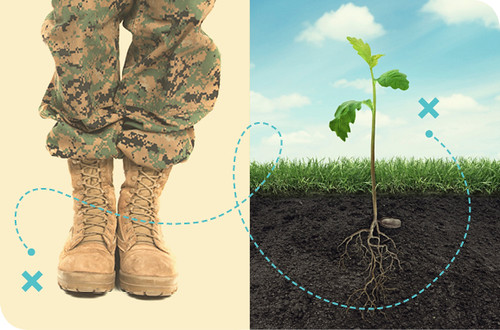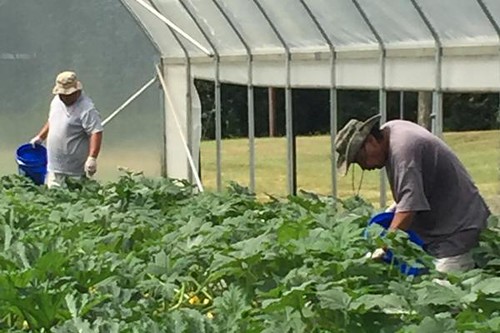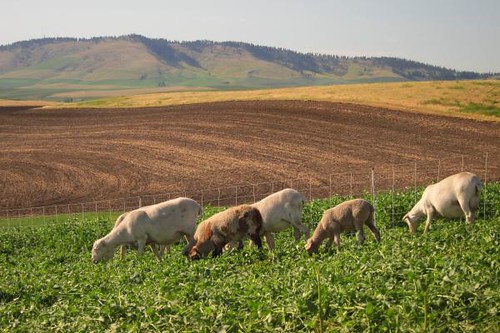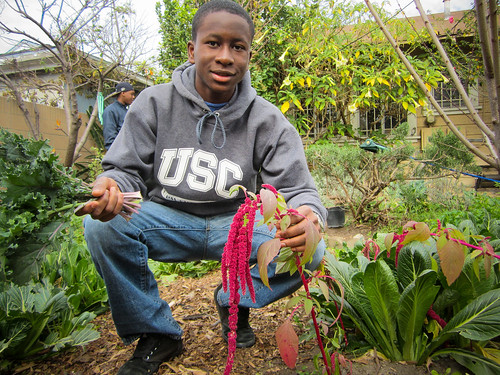The U.S. Department of Agriculture’s National Institute of Food and Agriculture (NIFA) invests in agricultural research, education, and extension programs that take groundbreaking discoveries from laboratories to farms, communities, and classrooms. These programs enhance the competitiveness of American agriculture, ensure the safety of the nation’s food supply, improve the nutrition and health of communities, sustain the environment and natural resources, and bolster the economy. The following blogs are examples of the thousands of NIFA projects that help Americans get to know their farmers and their food.
1. From Boots to Roots: Helping women and Hispanic vets earn ag STEM degrees
“Boots to Roots” is a program that helps female and Hispanic military veterans earn bachelor’s degrees in agriculture and other science, technology, engineering, and mathematics (STEM) degree programs. “Essentially, all agriculture is science-based, and the work ethic of veterans is extremely high – which will increase the success of this program and lead to additional opportunities for veterans,” said Ken Mix, Boots to Roots program director.

2. Tribal communities strive to regain food sovereignty
The Oglala Lakota people thrived for centuries as a self-sustaining community. They utilized the bounty of their local environment to provide food and shelter,” said Nick Hernandez, Community Food Project director at South Dakota’s Pine Ridge Reservation. “In modern times, 95 percent of food and basic goods are hauled onto the Oglala Lakota Nation, perpetuating a phenomenon known as a food desert.” Now, times are changing for the better.

3. Mixed Crop-Livestock Systems: Changing the Landscape of Organic Farming in the Palouse Region
Grazing livestock may soon be a common sight in the Palouse region of southeastern Washington, usually known for its rolling hills and grain production. Jonathan Wachter, a soil science doctoral student at Washington State University, has been working with a local farm to improve the competitiveness of organic mixed crop-livestock systems and their potential adoption by growers in a conventional grain-producing region.

4. Feed thy neighbor: South LA youth use neighborhood gardens to educate, better community health
“The youth in our programs have had tremendous success demonstrating that they are completely capable of co-creating and facilitating effective nutrition, cooking, and horticultural programs that get more of their neighbors wanting to eat their veggies,” said Megan Hanson. What began with the desire of a group of high school students to increase access to better nutrition education has blossomed into RootDown LA, a community food project operating in three South Los Angeles neighborhoods with the help of the youth participants.

5. USDA Programs Help Ease Transition to Farming, One Vet at a Time
In 2013, Kyle Cox separated from the Army to begin his family’s future in agriculture. With 700 acres, the farm produces alfalfa, corn, and more than 2,000 head of cattle. Getting started, Cox took advantage of veteran-focused training funded by U.S. Department of Agriculture’s National Institute of Food and Agriculture (NIFA). The training is part of USDA-wide effort to support veteran farmers.

April is USDA’s Know Your Farmer, Know Your Food Month. Learn more about how USDA is Strengthening America’s Local Food Systems and Organic Agriculture through new markets and new opportunities at https://medium.com/usda-results
